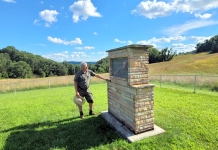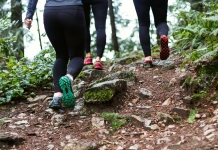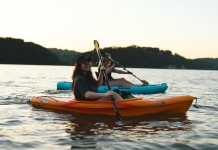
Though West Virginia winters may be comparatively mild, sudden snow squalls can quickly threaten to consume even the warmest winter days, particularly in West Virginia's higher elevations, in which its ski resorts are located. Please review the following skiing safety tips before venturing on a winter's excursion in West Virginia, on skis or off.
- Dress for the weather. When you venture into the cold, make the most of the heat within your body. Check a wind-chill chart to gain an accurate idea of temperatures to expect and how warmly you'll need to dress. Your clothing should be windproof, water repellent, and designed to allow moisture to evaporate from your body. Layered clothing is the most flexible and allows you to adjust warmth throughout the day as weather and temperatures fluctuate.
- Know basic first aid, including cardiopulmonary resuscitation (CPR).
- Take a friend with you. Before you leave, tell someone where you're going and when to expect you back.
- Wear appropriate layered clothing. Wool is the best protection if you become wet. Certain new synthetics are also good protection. Avoid wearing cotton next to your skin. When it is wet it draws heat from your body. Down is good in dry conditions, but becomes ineffective when wet.
- Carry food, clothing, some sort of shelter and matches. Extra dry clothing may save your life.
- Maintain your energy supply by eating high calorie foods frequently during your trip.
- Avoid becoming overly fatigued.
- Seek shelter from wind and rain if you are lost. Try to stay dry and put on extra clothing to stay warm. Set up your tent or dig a snow cave. Build a fire if dry wood is available.
- Hypothermia occurs when the body loses heat faster than it can produce it. This causes the temperature of the primary organs to drop. Both dry and wet cold can cause hypothermia.
- The first stage of hypothermia is shivering, the body's natural reaction to cold, which produces heat. The victim should move closer to artificial heat, eat hot food, or add more clothing.
- Once the victim has passed this first stage, cold will begin to affect the brain. From this point on, recovery may occur only with the help of others. This more dangerous level of hypothermia commences when the shivering stops. The person may look pale or blue. Movement will slow as the body conserves warmth for the main organs. Hence, less blood is being pumped to hands, arms, feet, legs, and skin. The brain's reasoning power is affected, and main organs begin to slow down as temperature lowers.
- The victim should be removed from the cold. Wet clothing should be removed. Dry the person and wrap in dry blankets, sleeping bags, or clothing. Body-to-body contact to warm the person may be needed in extreme cases. If the person is conscious, give warm liquids slowly. Take the person to a medical facility as soon as possible.
- When heading out for a day of winter recreation, it is always a good idea to carry the following:
- Identification and medical information
- Money for a phone call
- Extra food
- Extra clothing
- Map and compass
- Knife
- Flashlight
- Matches/Firestarter
- First Aid Kit
- Sunglasses/Goggles
- Hypothermia

































